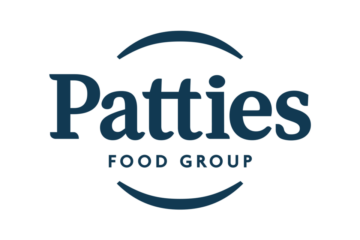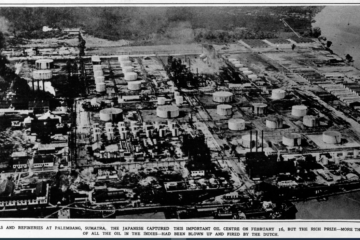By Di Gabb and Roberta Julian
This chapter traces two distinct yet ideologically aligned waves of Dutch migration to Australia—one preceding World War I and another following World War II. Both were driven not by typical economic motives or adventure but by deeply held ideological or religious beliefs, making these migrants outliers in the broader history of Dutch migration.
Part One: Socialist Pioneers in Pre-WWI Queensland
The first group consisted of working-class idealists from Buiksloot, Amsterdam, who migrated around 1910–1920 with the dream of establishing a socialist cooperative farming community in Australia. Motivated by political disillusionment, religious conflict, and hardship—including poverty, disease, and overcrowding—they were inspired by the socialist ideals of Pieter Jelles Troelstra and the Social Democratic Labour Party.
Led by Hubert Neering, a former seaman and cabinetmaker, “The Company” comprised around 80–90 people, including tradesmen, intellectuals, and politically aware women. They left for Queensland with little practical farming knowledge, having idealised Australia as a land of opportunity.
Their journey was fraught with difficulty: long sea voyages, disease, and the psychological toll of permanent departure. Upon arrival, the settlers initially remained near Brisbane, where they struggled to find work, build shelters, and choose between remaining near the city or pursuing their vision of communal rural life. Some, like the Lecker and Roelofs families, settled in Rocklea; others, such as the de Vries and Souwer families, ventured into the remote and underdeveloped Burnett region.
The harsh rural conditions tested their resolve: prickly pear infestations, drought, floods, bushfires, and dairy farming setbacks plagued their efforts. Yet through cooperation, mutual support, and a strong sense of community, they survived. Their communal aspirations evolved into practical neighbourly solidarity.
Despite adversity and isolation—compounded by suspicion and discrimination during WWI—their children thrived. Many completed secondary and tertiary education, symbolising the upward mobility made possible by their parents’ sacrifices. Dutch cultural elements—songs, Delftware, and language—persisted across generations. Today, descendants still live and farm in Queensland.
Part Two: Calvinist Identity in Post-War Tasmania
The second part shifts to a sociological examination of a post-WWII Calvinist Dutch community in Kingston, southern Tasmania. Unlike the socialist pioneers, this group was united by strong religious values derived from the Gereformeerde Kerken (Re-Reformed Church) of Groningen. Their migration was facilitated through chain migration and the creation of the Australian Building Corporation (ABC), founded by Dutch businessmen in 1950.
This migration wave was also characterised by self-sufficiency. Dutch tradesmen helped each other build homes, churches, and businesses. The Reformed Church of Kingston was established in 1952 using voluntary labour, followed by the Calvin Christian School in 1962. These institutions became focal points for preserving religious identity, reinforcing communal values and discouraging social mixing with Anglo-Australians.
The community’s social structure reflected its religious ideology: strict observance of the Sabbath, limited engagement with secular activities, and a communal lifestyle steeped in shared norms. The use of Dutch language and customs (e.g., Sinterklaas and oliebollen) reinforced group cohesion.
However, over time this tightly knit ethno-religious community experienced sociological transformation. The 1970s brought infrastructural changes (e.g., improved road access), economic mobility, and generational shifts. Members began moving out of Kingston, intermarrying, and increasingly participating in broader Australian society.
Institutions like the church and school had to adapt. Dutch-born ministers were replaced by Australian-born ones. The Calvin School opened to children outside the Reformed community and introduced fees. Tensions arose between traditionalists and reformers over identity and religious purity. By the 1980s, what had been a distinct ethno-religious enclave became integrated into the mainstream.
The chapter concludes that both communities—socialist and Calvinist—were built on strong communal ideologies. Their integration into Australian society followed different trajectories, but both offer deep insight into how faith and ideology shaped the migrant experience. Over time, ethnicity faded as a primary identity marker, particularly among younger generations, though cultural pride remained.
Author Biographies
Di Gabb is a historian and writer with a background in community-based oral history. Her work focuses on micro-histories of migrant communities and the personal dimensions of social change. In this chapter, Gabb offers a richly textured account of the pre-WWI Dutch socialist settlers in Queensland. Drawing on family documents, oral histories, and community records, she reconstructs the emotional and material hardships endured by these pioneering families.
Dr Roberta Julian is a sociologist and Professor Emerita at the University of Tasmania. She is a leading scholar in ethnic studies and religious sociology, especially in the context of post-war European migration to Australia. In this chapter, Julian provides a macro-level, sociological analysis of the lifecycle of the Reformed Dutch community in Tasmania. Her ethnographic research (1983–1987) and interviews with community members inform her conclusions about religious identity, community development, and cultural integration over time.

